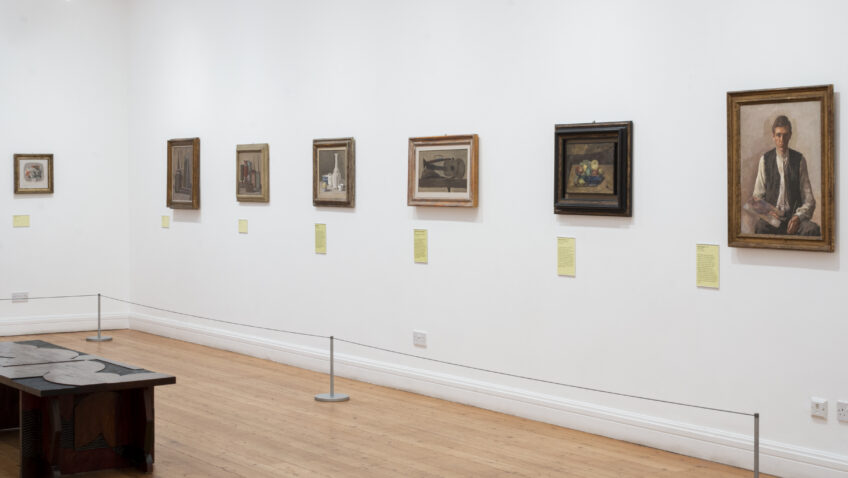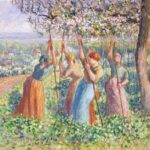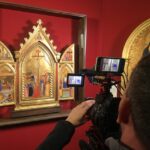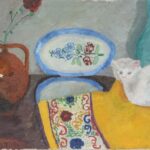Joyce Glasser reviews Giorgio Morandi: Masterpieces from the Magnani-Rocca Foundation (Art Exhibition at the Estorick Collection, London until 28 May 2023).
The Estorick Collection is celebrating its 25th anniversary with a major exhibition of the much-loved, much-admired, and immensely influential Italian artist Giorgio Morandi. This mesmerising exhibition is on until 28 May, so you still have time to be enchanted by the images that captivated the musicologist, collector, art critic and entrepreneur Luigi Magnani (1906-1984) from the moment he first saw Morandi’s work at the Rome Quadrennial of 1939. As the title suggests, this exhibition is about the two men: an art lover (who refused the label “collector”) and the artist who dominated his impressive collection near Parma, now open to the public.
The two men met in 1940 and remained friends until Morandi’s death in 1964, by which time Magnani had amassed what might be the largest and most representative collection of Morandi’s work outside of the renowned Museo Morandi in Bologna. All fifty of the Morandi works in Magnani’s art collection are here, complemented by the fine permanent collection of etchings and drawings collected by Erick Estorick, who met the artist later in his life.
When most people think of Giorgio Morandi, they think of a recluse, like the American visual artist and filmmaker Joseph Cornell who, from the age of seventeen until his death lived in the same house in New York with his mother and disabled brother, never venturing out of New York state. Morandi was born in Bologna, went to school there, lived his entire life there (sharing a house with his three unmarried sisters) and is buried there. He did however spend summers in their country house.
But the exhibition shows that far from being a reclusive artist, Morandi was in continual contact with artists from all over the world, and, between 1913 and 1930 – before he settled into the mode of working and style that would define him – he dabbled in the Italian trends of Futurism, Metaphysical Art and the Novecento School. He also had a career as an art teacher in Bologna where he influenced future generations. Federico Fellini and Michelangelo Antonioni, paid tribute to Morandi by including his works in two of their greatest films, La Dolce Vita and La Notte, respectively. Morandi did travel in Italy, notably to Rome and Florence, but everything he needed was at home in Bologna. Like Magnani’s beloved Beethoven who, in his maturity, seldom left Vienna and never saw the sea, his work was his life.
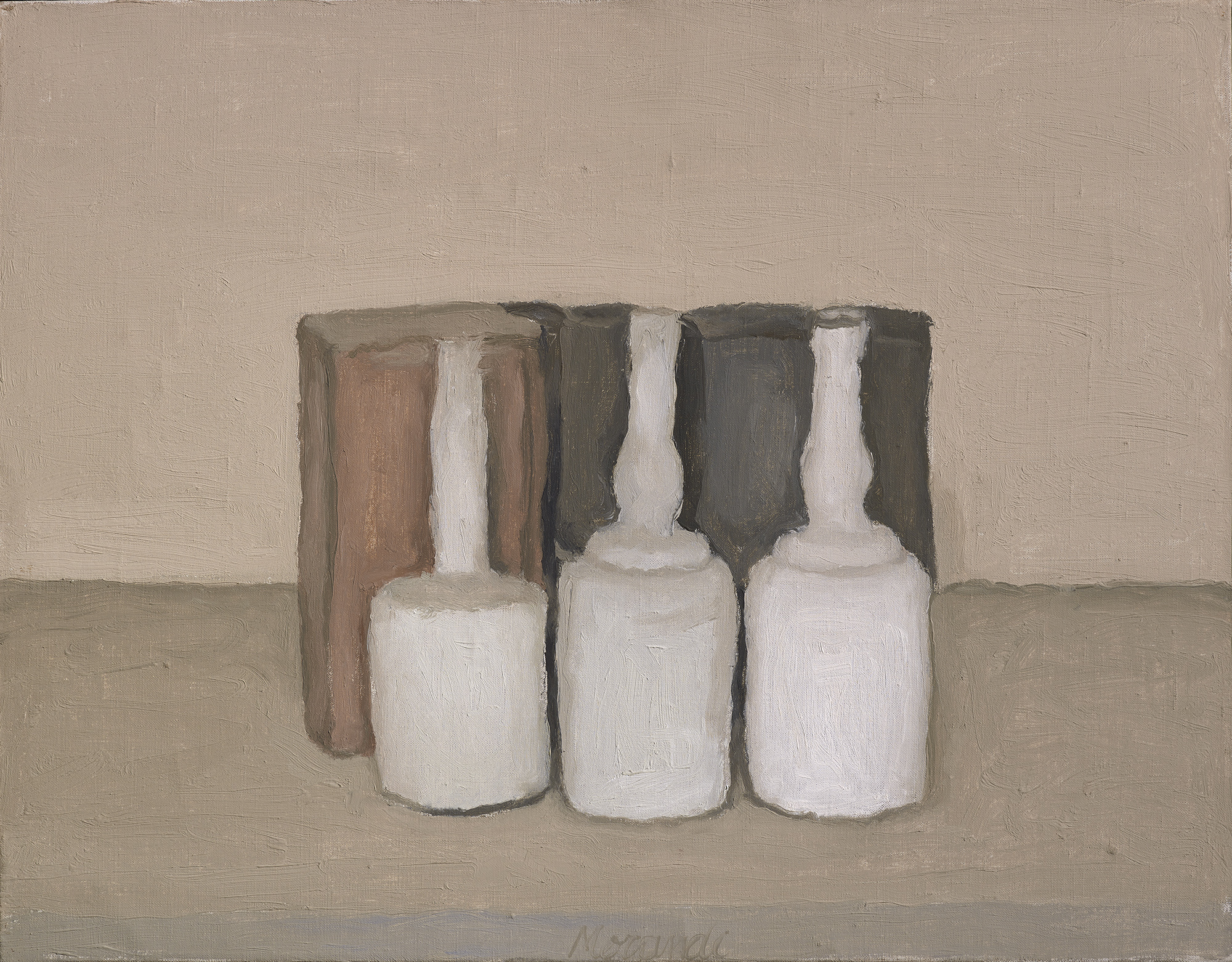
Magnani travelled more widely, usually connected to his love of the arts. He went to the UK frequently, notably to meet TS Eliot, Graham Sutherland and Dylan Thomas, among others. Before opening his home to the public as a museum he entertained there, his last visitor being Princess Margaret in September 1984.
Magnani’s collection had an internal coherence related to his associative mind and emotional vision (his art had to have a soul). For example, in literature, he loved Thomas Mann’s Doctor Faustus, which prompted him to seek out the character in a work by Rembrandt. He championed Italian painters, but generally looked for artists who occupied pivotal positions in the history of art or paintings that marked a turning point. He was attracted to Titian’s Balbi Holy Conversation of 1513, in which one can still trace the hand of Giorgione – who had died in 1510 in his early thirties. Titian arguably replaced Giorgione as the great painter of the Venetian High Renaissance.
Magnani was often asked how he chose a work for his eclectic collection. ‘The relationship I love with an artwork is one that pertains exclusively to form. A painting full of content does not interest me at all, however beautiful its narrative may be.’ Morandi’s work delivered that beloved relationship: even his narrative is expressed by the arrangement between forms and colours in a space.
Morandi learned etching by studying the books of one of his favourite artists, Rembrandt, and for a while paid homage to the great 18th century French still life painter Jean Simeon Chardin and to Cézanne by painting bouquets of flowers and apples. Cézanne’s profusion of self-portraits even led Morandi to paint a few himself, including a dazzling Cézanne-like portrait, aged 35, with the painter staring straight at us, his palette with the muted hues that would dominate his output for the rest of his life in his right hand, and his brush in his left.
By 1927 the apples had disappeared from Morandi’s work, and his last self-portrait was in 1930, when he was 40. By the time he met Magnani, Morandi had, with one lingering exception, streamlined his models, reducing them to empty vessels, but not just any vessels. Vases that might have held flowers, jars that could have held Chardin’s jam, bowls and pitchers that could have held milk, usually arranged on a table as though at some point, in a parallel universe, a human could have been there, like in a Bonnard interior. But now the humans have gone, leaving an eerie silence and – you can feel it – the tension or harmony among the remaining objects.
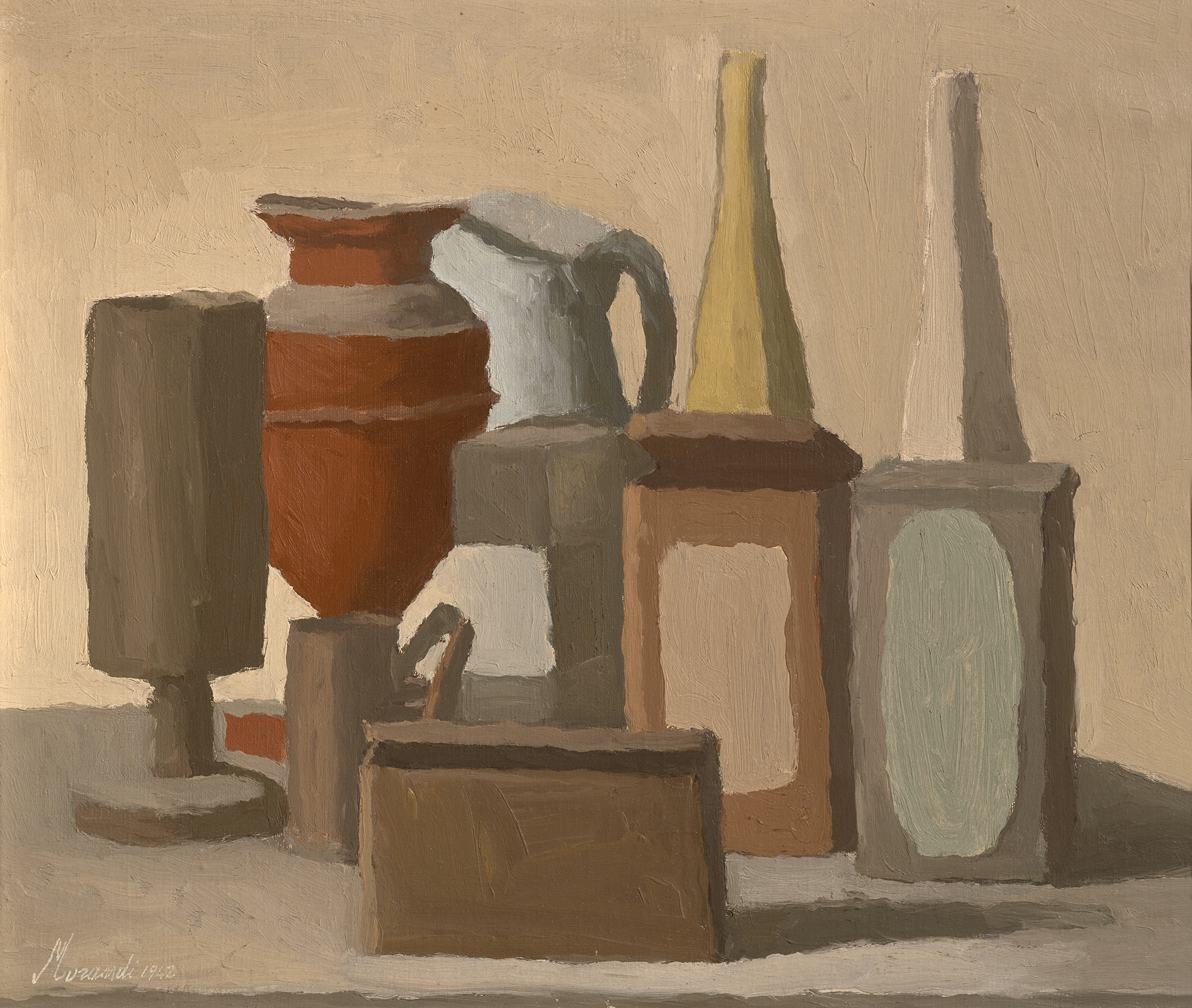
That lingering exception was flowers, originally inspired by Chardin, Renoir and Henri Rousseau, the so-called “primitive” painter, who was also an influence. But by 1942 those flowers, never fresh anyway, had faded from the repertoire.
Even before meeting, Magnani and Morandi had much in common, from their love of Rembrandt’s soulful etchings to the later 19th century post-impressionist Paul Cézanne’s use of form and his innovative perspective. When they met, Magnani owed five Cézannes. Morandi gave him a gift of three of his etchings.
Early on in their friendship, in 1941, Magnani requested a still life with musical instruments, reflecting his profound knowledge and love of music. Morandi dutifully accepted, but changed the instruments proscribed by his client, delivering a piece in an awkward spirit of compromise. Requests and musical instruments were out. Challenging and visually arresting geometric arrangements were very much in.
Mindful of Morandi’s legacy, Magnani began filling in the holes in his collection, purchasing Natura Morta Metafiscica, 1918, a rare masterwork from Morandi’s Metaphysical period. While heavily influenced by de Chirico, it is still very much Morandi’s, with the curious bottle, and its shadow. There are some landscapes too. For the most part, though, lose yourself in a multitude of compositions that, in Professor Paul Coldwell’s mind, reflect the horizontal arcades and the vertical towers of Bologna; and in the gorgeous, subtle hues: variations on whites and beiges, with the appearance of ochre and golden yellows.

